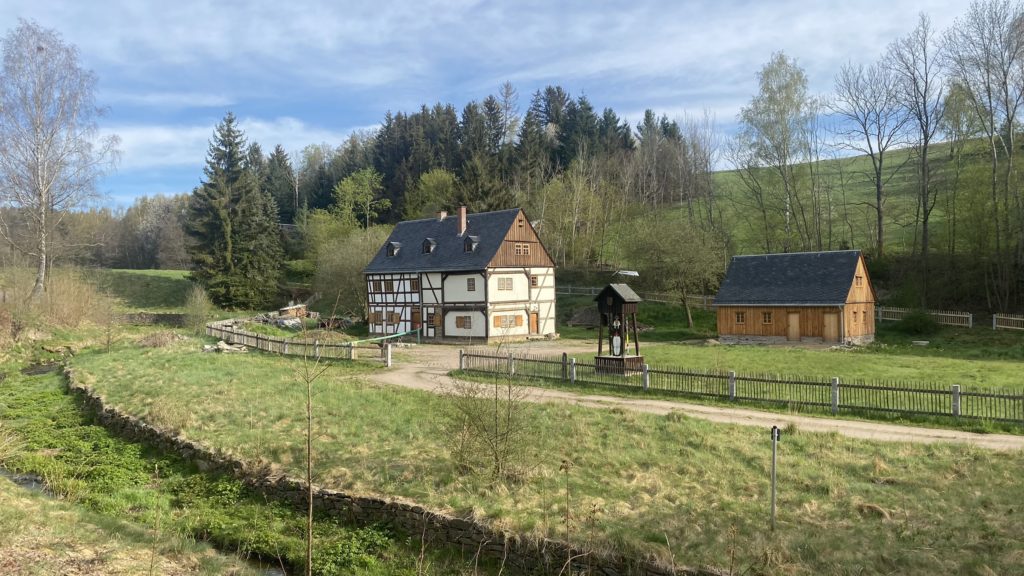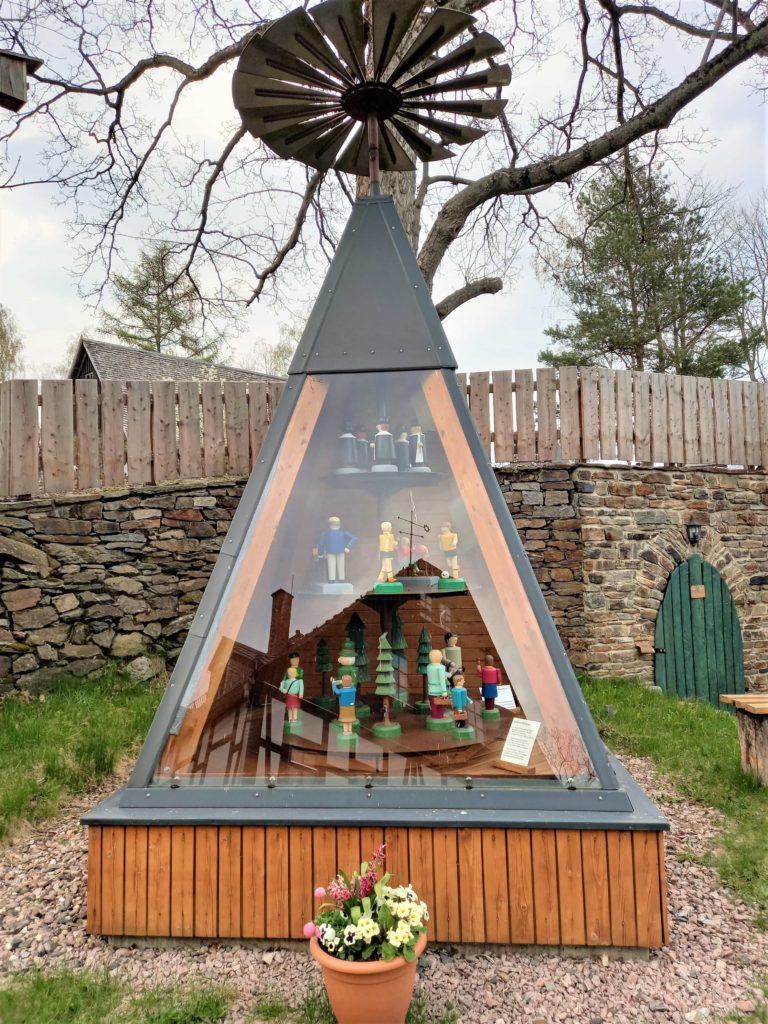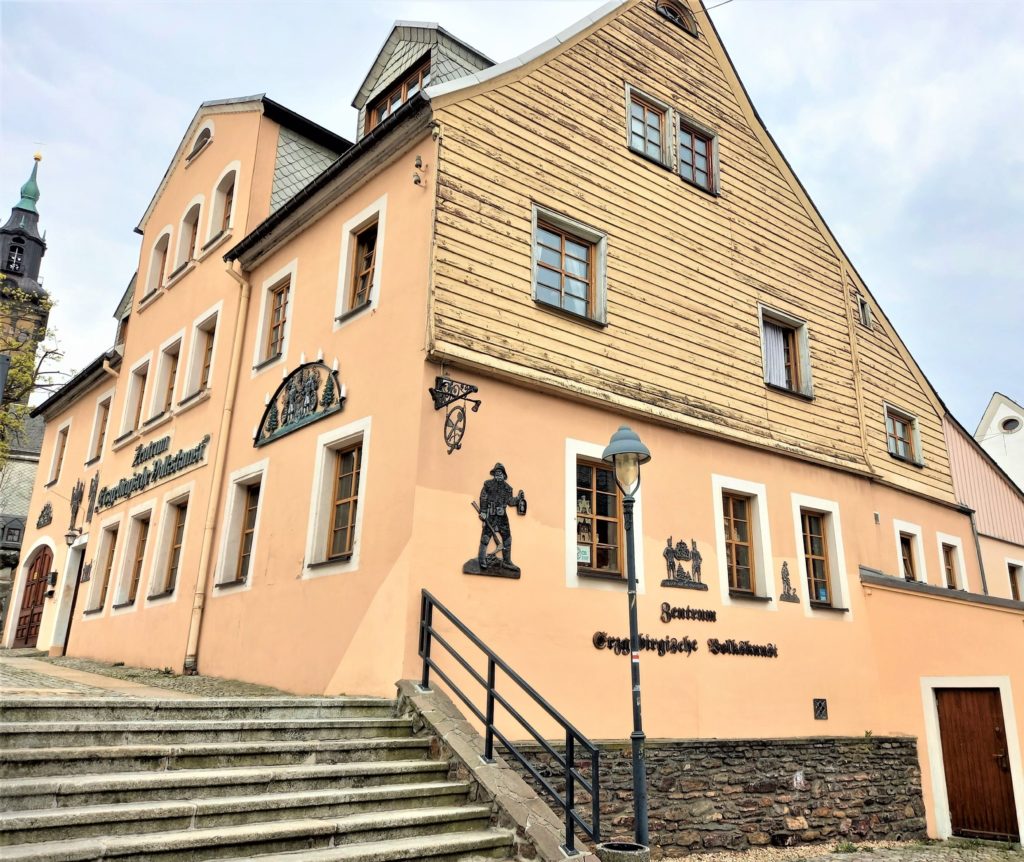Co-author Yoanna Markova
When a stranger arrives in the region of Schneeberg, they will observe the picturesque surrounding and see some unexpected things in the landscape. What seems to be a natural part of the scenery is not always the case! One can see tranquil small lakes, substantial mounds, and hills with nicely formed forest areas on top of them. All these supposedly natural features of Schneeberg’s countryside are in fact shaped by specific human activity over the past 800 years.
EVERYTHING CAME FROM MINING!
The lasting impact of the mining activity in the region is visible nearby and inside towns and villages. Remarkable steep mounds appear to be historical depositions of mining material and they hide thousands of meters of mining tunnels beneath the surface. They also pinpoint the locations of former minefields, shafts, tunnels, and safe exit doors at the end of the hill. Most of the woods in the area were cultivated with fast-growing trees, which were used for the construction of the mine tunnels. There are plenty of artificial lakes, formed to retain the main valuable source of energy for processing mining materials in various locations. The lakes were a part of the cultivated water management system with channels, which today are only used by locals for fishing and relaxing. Also, the picturesque view of mild natural forms is sometimes interrupted by unexpected phenomena in different shapes and forms, such as chimneys, factories, processing plants, mining shaft constructions, or stamp mills in the meadows.

Understanding the evolution of the mining cultural landscape is difficult without knowing the long rich history of mining, dating from the 12th century until the 1990s, which defined the landmarks and influenced today’s characteristics of the townhouses in the area.
IMPOSING LANDMARKS
If we time travel through the past, we would see how landmarks bear witness to the change of focus in human activity in the area. As the most visible thing in the landscape, landmarks provide a unique look to the area. St. Wolfgang church in Schneeberg has been a focal point for the community ever since it was constructed in the 16th century and still dominates the modern townscape. However, with the industrialisation of the region came the shift in perspective. New landmarks were created as a result of the post-mining production activities. The Schindlers Werk Blue Dye Factory emerged as a result of the extraction of cobalt ores and was used for the production of cobalt blue dyes from the 17th to the 19th century. Among the manor house and storehouse is a high rising chimney that symbolizes the strive for production. The extraction of uranium during the 20th century was defined by its own ostentatious monuments, such as the uranium factory and the miners’ hospital in Erlabrunn.

UNIQUE HOUSE DECORATIONS
Mining has not only shaped the landscape, but also influenced art, architecture, and culture. Black stone slabs roofs are characteristic of both old and modern houses in Schneeberg, and that perfectly evokes the view of the city from the city church. So-called Schiefer stone slabs, long-lasting, easy formable for steep and rounded roofs and even facade decorations, were one of the ore products of the region, local material significantly exported in history.

Locals have a special way to tell the story of mining history with unique features they embed on the facades of their houses and in their gardens. Some symbols, some urban ornament or furniture, or models of children’s toys, made of metal or more often wood, because handicrafts in stone and woodcarving were additional incomes in the region, arose as a result of working with wooden remains from mining.

Hammer and chisel, basic tools for the most common method of mining, when laid across each other make an international symbol of mining and can be seen on almost every house or building in and around Schneeberg. Another very popular feature on the facades are the wooden folk artefacts. The carved light holders, so-called Schwibbogen, serve as a reminder of the value of the light in mining. Wooden figurines of the miners and incense burning figurines on houses are very common as well. They are also an integral part of the Christmas mountain models or the pyramids, the front garden models, and decorations in the stylized form of the mining hill, showing the story of the mining process. Also, little black wagons in the backyards, decorated with flowers and marked with the well-known mining
greeting “Good luck”, are an addition to the storytelling of the mining. Those all seem to be parts of the tradition and customs of the Ore mountain region.

The connection with the ancestral miners is still alive! All these living testimonies of mining heritage visible in the landscape and on homes convey the strong relationship with the past and build an unbreakable bond with the local community in and around Schneeberg.
XXXXXXXXXXXXXXXXX